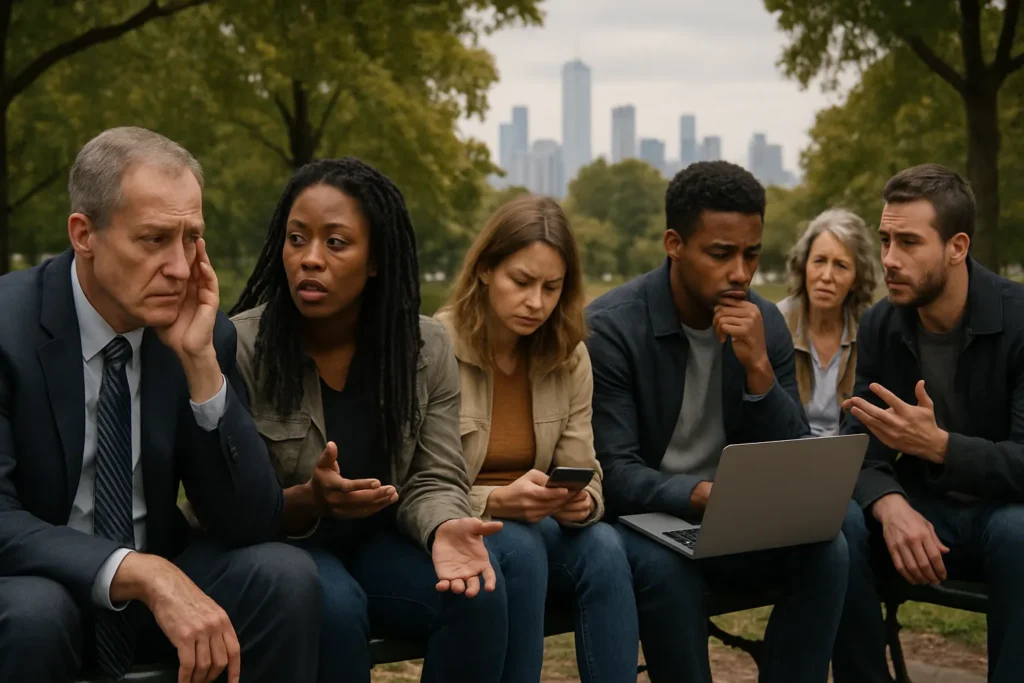The Mood: Why Democratic Spirits Have Sunk
A familiar feeling of unease is rippling through Democratic circles nationwide, but what’s new is its apparent depth and persistence. Six in ten Americans say they’re pessimistic about U.S. politics and the country’s direction—a grim mood, yet especially intense among Democrats. Just one-third of self-identified Democrats now say they are even “somewhat optimistic” about their party’s future, a jaw-dropping drop from 60 percent last summer, according to the latest AP-NORC Center for Public Affairs Research polling.
The visible contrast between hope and weariness is starkest among Democrats, who—despite historic milestones on voting rights, pandemic relief, and climate action—now sound particularly doubtful about their party’s long-term prospects. Among the key drivers of this malaise: a sense that leadership is out of touch, an overwhelming focus on opposing Donald Trump instead of advancing bold positive policy, and a lack of inspirational figures reminiscent of Barack Obama’s 2008 rise. “I don’t think I’ll feel good about my party again until somebody steps up in terms of being a leader that can bring positive change—an Obama-like figure,” says Damien Williams of Cahokia Heights, Illinois, echoing the cry of countless yearning progressives.
Leadership in Question: Mixed Reviews and Missed Connections
For many Democrats, the faces of the party—Chuck Schumer in the Senate, Alexandria Ocasio-Cortez in the House—are met with ambivalence, at best. About three-quarters view Bernie Sanders positively, polling shows, and around half approve of Ocasio-Cortez, though she remains divisive among the broader electorate. This muddled reception reflects not only ideological divides within the Democratic coalition but also a profound uncertainty about what, exactly, the party stands for right now.
Why does this optimism gap persist, even after legislative successes and warnings of MAGA comeback? Dr. Lisa García Bedolla, a UC Berkeley political scientist, argues that “elected Democrats haven’t done as much as they could to remind people what distinguishes the party from Republicans on core pocketbook and justice issues.” Voters don’t just want opposition to Trump—they yearn for compelling, concrete improvements in their lives.
On the ground, everyday Americans feel this acutely. Small business owner Shonda Little in Milwaukee says, “We shouldn’t be settling for incremental change or defensive postures. We want leaders who fight for us unapologetically.” Her frustration mirrors a trend: whereas Republicans—somehow—have become the party viewed as more optimistic about their own future, Democrats feel stuck, defending processes and institutions instead of driving new ideas. Meanwhile, slightly more than half of Republican voters express optimism about their party, reflecting their confidence in a clear, forward-facing narrative—even if its substance is polarizing, or factually dubious.
“Pessimism among Democrats isn’t a matter of mere disappointment; it’s a warning sign that the party risks ceding hope itself—the very catalyst that helped it win the presidency and majorities in the past.”
Where Do Democrats Go From Here?
Could Democrats claw their way out of this confidence ditch? The answer isn’t simple, but history offers vital lessons for parties at crossroads. In the aftermath of Watergate, the Republicans floundered and bickered, only to be reanimated by Ronald Reagan’s vision for conservatism. In 1994, after their congressional rout, Democrats rebuilt around Bill Clinton’s centrist messaging—admittedly, not a model progressives rush to copy, but proof that opposition parties can reinvent themselves.
Pew Research surveys found that parties which articulate “what they are for, not just who they’re against” see better turnout and volunteer enthusiasm over time. Mary Frances Berry, a civil rights historian, observes: “The 2020 cycle showed Democrats could mobilize disparate voters when they offered a big tent, but simmering pessimism means many feel betrayed by business as usual.”
Many progressives demand that the party lead with boldness rather than incremental gestures. Universal healthcare, robust climate action, and fair taxation remain on the wish list. Labor unions—historically a key Democratic base—also want a party that will march with them, not just tout their support at campaign rallies. Voting rights and reproductive justice, once seen as signature Democratic issues, now require even sharper articulation during ongoing threats from Republican-led legislatures.
Against this uneasy backdrop, moderate voices urge patience, noting that a two-party system often breeds cycles of disappointment. But the stakes have rarely felt so high. As Harvard’s Daniel Ziblatt, co-author of “How Democracies Die,” warns, “When one party’s base grows demoralized, anti-democratic actors sense opportunity.” Republicans, for their part, are hardly enjoying unbridled favor, with only 4 in 10 Americans rating the GOP positively, but Democrats hover even lower in the polls—a sobering reality check.
Real hope will come not from chasing Trump’s shadow but from flipping the script: passing policies that tangibly improve lives, aspirational messaging that reflects the country’s true diversity, and leadership that emerges from—not imposed on—the grassroots. It’s not just about winning elections. As Senator Elizabeth Warren told The Atlantic, “The country is hungry for courage. We can’t just campaign on fear of the other guy.”

